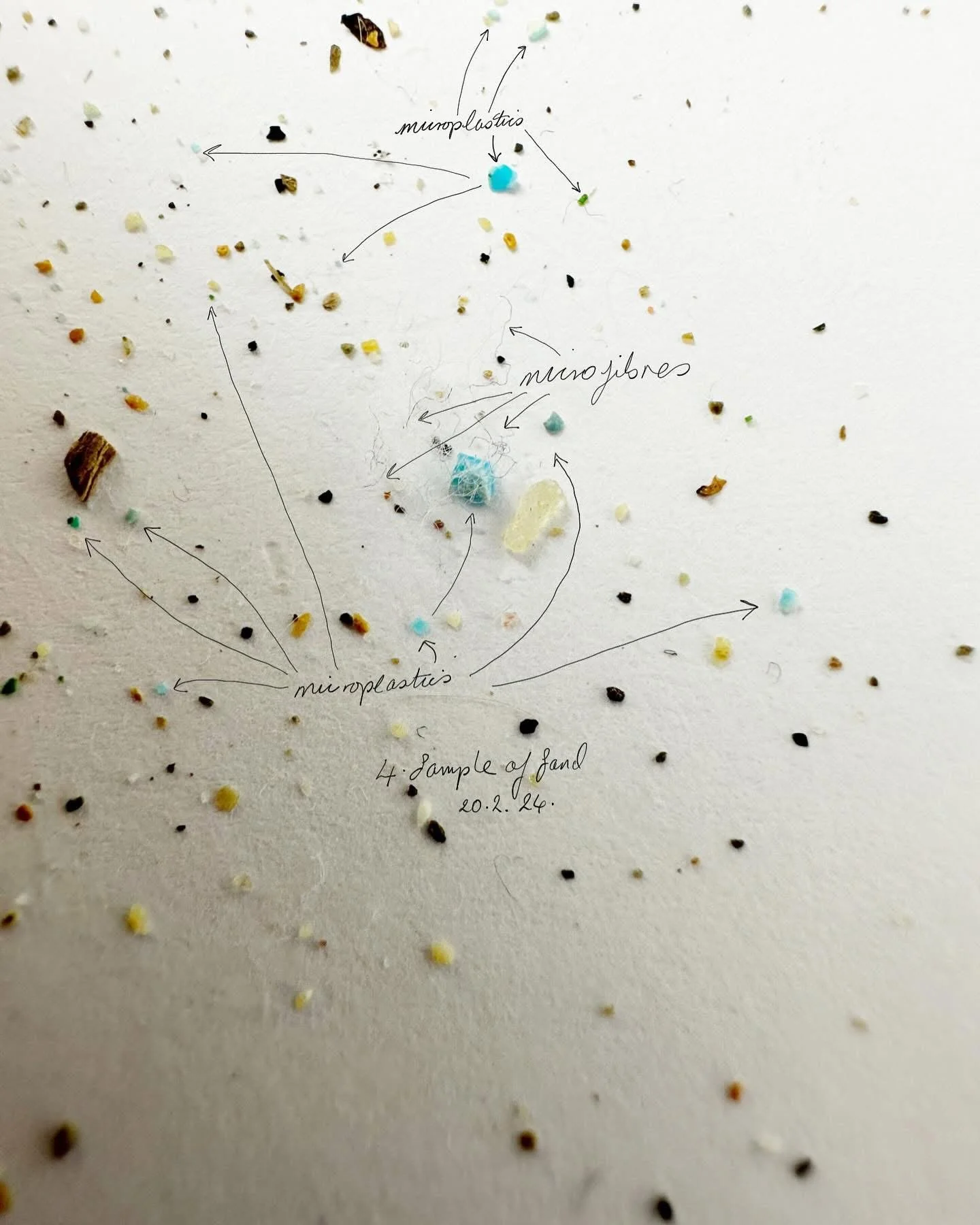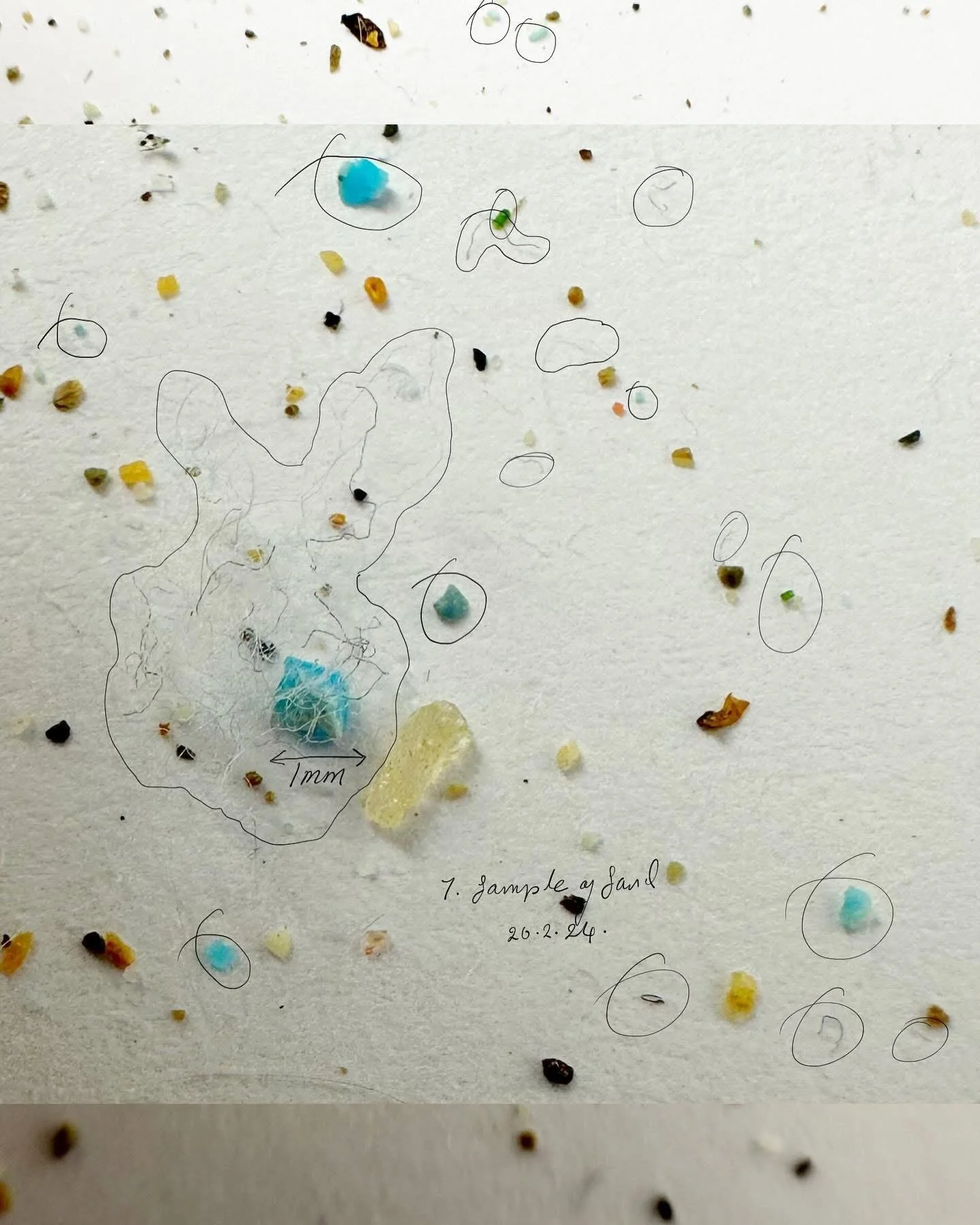The Microplastic Problem Hits the Global Stage... But Are Governments Still Looking Away?
As the scale of microplastic pollution comes into focus, the urgency for global action has never been clearer, or more overdue.
There’s a series of photographs we’re sharing alongside this article. At first glance, it looks like an abstract composition, a few flecks of colour, a hint of texture. But slide by slide, as the camera zooms in closer, you start to see it for what it is: tiny plastic fragments. Microfibres. Glittering dust that doesn’t belong. The invisible made visible.
This is microplastic pollution. And thanks to the pioneering work of Professor Richard Thompson; newly named one of Time Magazine’s 100 Most Influential People of 2025, it’s finally being recognised as one of the most pressing environmental challenges of our time.
For those of us working on plastic pollution, this is a moment worth celebrating. Professor Thompson coined the term “microplastics” nearly two decades ago. His research has shaped global understanding of how plastics degrade and accumulate across ecosystems, from the deepest ocean trenches to our own bloodstreams. His influence cannot be overstated, and we were honoured to welcome him as a speaker at our 2016 Wave Conference.
So yes, we’re thrilled. This recognition is not just about one scientist; it signals that microplastics are no longer niche, or future-tense. They are here. They are everywhere. And the world is, at last, taking notice.
But recognition is not resolution.
The largest piece of microplastic in this image is a nurdle (plastic pellet) and this sits at 5mm - The smallest piece is probably too microscopic to see.
A Systemic Problem, Still Without Systemic Solutions
While the spotlight on Professor Thompson is well-deserved, the political landscape remains fractured, and often hostile to environmental progress. The same Time 100 list includes names that cast a shadow over the hope we might feel, not least among them, Donald Trump, whose ongoing rollback of climate and environmental protections continues to jeopardise global agreements and fuel extractive industries.
Meanwhile, the much-anticipated Global Plastics Treaty, championed as a once-in-a-generation opportunity for systemic change, still risks being diluted into non-binding targets and voluntary measures. Governments, particularly in the Global North, are dragging their feet on meaningful legislation, failing to align ambition with the scale and urgency of the problem.
In the UK and elsewhere, proposed bans and targets are piecemeal at best. There is still no comprehensive policy framework to reduce plastic production, redesign materials at source, and protect frontline communities who bear the brunt of plastic pollution and its petrochemical origins.
Hidden in this sample of sand from Summerleaze Beach Bude, are hidden microplastics, under 1mm and measured in microns.
Microplastics: A Climate, Pollution, and Biodiversity Crisis in Disguise
Microplastics are not just an ocean issue. They are a deeply embedded part of the triple planetary crisis, contributing to climate breakdown, accelerating biodiversity loss, and driving pollution at every level of the ecosystem.
Plastic is fossil fuel. Its extraction, production, and incineration are carbon-intensive. Its waste legacy disrupts life in our soils, seas, and even in our own bodies. Tackling microplastic pollution is not a siloed task it's part of the same global effort to address climate change and ecological collapse with the urgency they demand.
In this image we are zoomed in and can see the size of the grain of sand and alongside it microfibres and microplastics, in many cases smaller than the grain of sand.
The Image That Tells the Story
These images… the seven slides zooming ever closer, is a metaphor for this entire moment.
The closer we look, the more we see.
The deeper we go, the harder it becomes to ignore the scale of the issue. But the more visible it becomes, the more powerful the call to action.
For all the challenges we face, for every foot-dragging government or watered-down commitment there are scientists, campaigners, designers, innovators, educators, artists, and communities who haven’t stopped. Who’ve been building the movement long before it was trending. Who, like Professor Thompson, have shown that persistence matters.
The Hope? It’s in the Work.
The hope lies in the fact that we’re not guessing anymore. We have the science. We have the data. We have the imagery. We know where the microplastics are. We know how they move. We know how they harm. We even know what needs to change.
What we need now is courageous, coordinated action, not next year, not in 2030, but now.
The scale of the global microplastic problem - Here we are zoomed in and can see the normally unseen.
Until then, we keep zooming in. We keep showing the fragments. We keep connecting the dots.
Because microplastics are everywhere; in our oceans, our air, our water, our soil, and our food systems. They are a symptom of a broken system, but also a marker: a way to trace the threads of climate, pollution, and biodiversity loss back to their shared root causes.
So we work. We build. We tell the truth. We invite action.
Because a clean ocean, and a healthy planet, isn’t just a dream.
It’s a decision.
It starts here.







